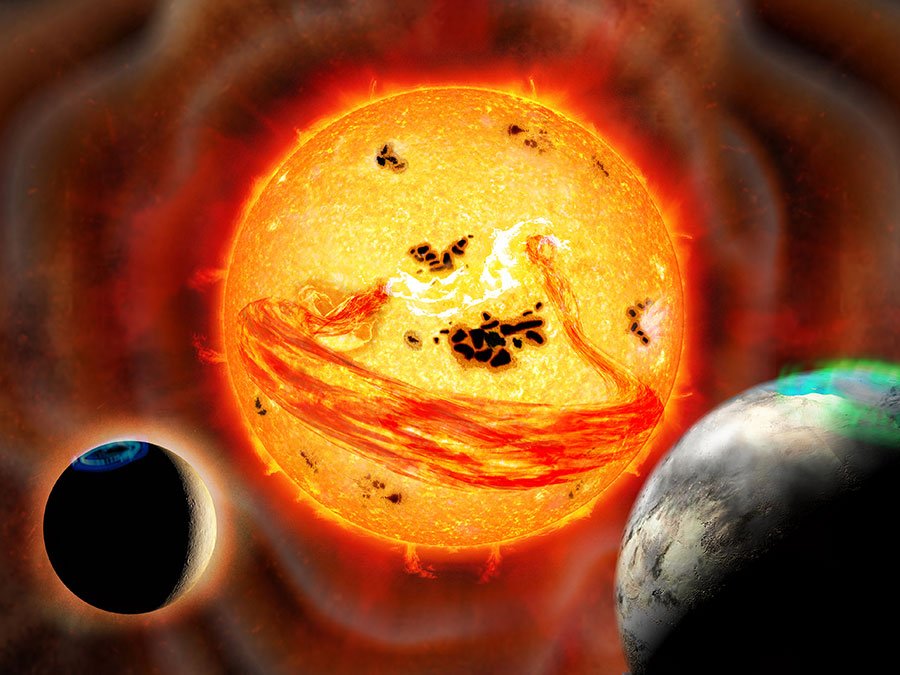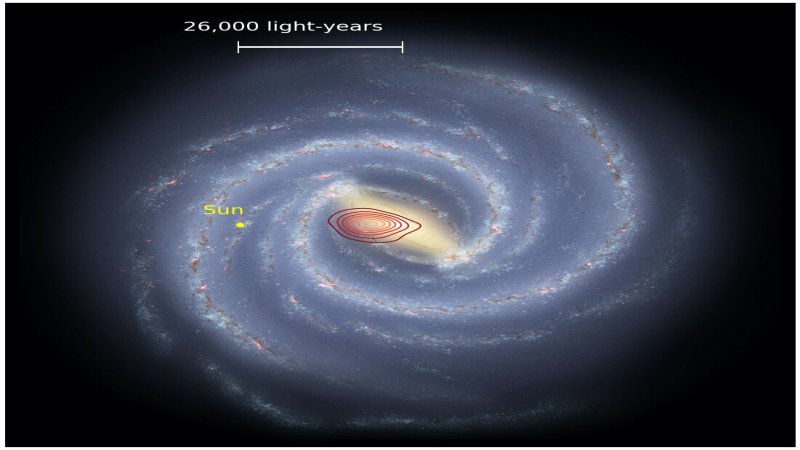Sun-Like Star EK Draconis: Fiery Dragon’s Breath May Scorch Young Planets
Eddie Gonzales Jr. – MessageToEagle.com – Like a dragon of legend, the star EK Draconis has belched out a stream of flaming gas.
This is the first time such a supermassive filament eruption has been observed on a Sun-like star. Since, EK Draconis is similar to the Sun in size, but younger, this could indicate that the Sun also produced such supermassive ejections long ago.
Dragon’s Breath: Artist’s impression of a supermassive filament released by a superflare on EK Draconis approaching young planets. (Credit: NAOJ)
Large amounts of flaming gas from the Sun would have made the environment harsh for the planets, including the young Earth where life was first emerging.
A research group led by Kosuke Namekata and Hiroyuki Maehara at the National Astronomical Observatory of Japan (NAOJ) has been monitoring EK Draconis, a young solar-type star located 111 light-years away in the constellation Draco, the Dragon. Using several satellites and telescopes, including the 3.8 meter Seimei Telescope in western Japan, the group captured observational data indicating that a superflare had erupted from the star.
This is the first optical spectroscopic observation of a superflare on a Sun-like star. Associated with the superflare, they also found evidence for an eruption of a supermassive filament of plasma, gas so hot that it breaks down into ions and electrons.
This was another world’s first discovery for a Sun-like star. The filament was large, 10 times more massive that any mass ejection ever recorded on the Sun, and fast, 500 km/s (about 1 million mph).
Assuming that EK Draconis is a typical example of a young Sun-like star, supermassive filaments could be common around young stars. Such hot, high-speed filaments streaming out of the young Sun would have had a severe impact on the environment of the Earth and other planets. These effects need to be considered when thinking about the origins of life on Earth and looking for life on other planets.
These results appeared as Kosuke Namekata et al. “Probable detection of an eruptive filament from a superflare on a solar-type star” in Nature Astronomy on December 9, 2021.
Written by Eddie Gonzales Jr. – MessageToEagle.com Staff











